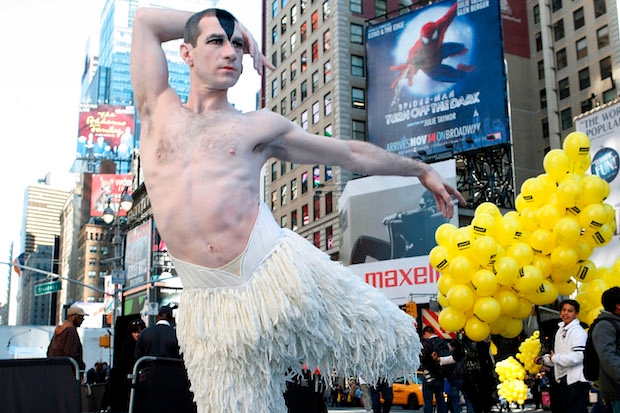Some fans of Jonathan Ollivier, the fine dancer who was killed on his motorbike recently on the day he was to perform one of his best roles, the brooding sexpot in Matthew Bourne’s The Car Man, have been mourning that he wasn’t alive to see his glowing obituaries.
Separately, I see that last week Rupert Pennefather of the Royal Ballet suddenly decided to leave ballet, aged 34. Next month he was due to open the new Covent Garden season in Romeo and Juliet. Again, fans have been commenting, this time noting that he never got a particularly enthusiastic press from the critics, and querying whether it might have been a factor in his quitting this young.
I did twice feel happily surprised by Pennefather a number of years ago (in La Sylphide after some brilliant coaching by Johan Kobborg, and as a refreshingly breezy Beliaev in Ashton’s A Month in the Country opposite the docile Darcey Bussell), but otherwise I’ve been one of those reviewers who fill their pens with lemon juice when they feel disappointed at another shiny golden British hope buffed up by the marketing department, but dulling to matte.
Ollivier didn’t always have such a great press, either. A decade ago he seemed to me a hapless leading performer at Northern Ballet saddled with of shelf-loads of stagey frock-coat and breeches roles. It wasn’t until in his thirties he found superior material — by Matthew Bourne, in particular — that he seemed remarkably transformed into an impressive and rewarding dancer of complex emotions. (His Speight in Bourne’s masterpiece about Sixties London high society, Play Without Words, was awesomely naughty and strange.)
But would either Ollivier or Pennefather really give a damn what I or anyone else wrote about them, alive or dead? The coverage isn’t meant for them to steer their careers by. No dancer should be unconfident enough to need to read their reviews. What would they do? Try to adjust their performance? As Tamara Rojo once pointed out to me, which critic should she try to please?
In any case the critics have no business to be thinking about the dancers’ reactions. They’re expressing their personal reactions to a performance set before them. As they write, they have no feelings about the performer at all, only a selfish interest in whether the interpreter delivered them, as spectators, what they sought, what they wanted to feel as a result of experiencing this work of art.
The readers check out their own spectator experience by comparison – that’s what it’s for. It’s the mothers who hoard the print inches for their darling, just as it’s the fans who pore over the appreciative obituary, and naturally they expect their loyalties and the critics’ distant views to fuse in one melodious paean.
Regardless of mothers, fans and critics, the great performers are not watching anxiously for notes of approval (unless they’re answering to accountants – let’s say, producing a show or running a company as well, which is another thing entirely). The memorable interpreters and creators are those who burn us with the heat of the flame that propels them, they’re not asking us to help bring their hesitant little glow to life with our paper cuttings. They know when they felt they’d done well, got it right – and very likely there were no critics there at the time.
Mikhail Baryshnikov told me once that he’d only felt he gave his best in the studio with the choreographer, never in performance. Others are subdued in the studio work, on fire once they step on stage and see all those eager faces upturned towards them in the dark. As the wanly reviewed Pennefather leaves the scene, it’s more than likely that he has some intense memories that never made print. And Ollivier, who came into his artistic bloom not much younger than Pennefather is now, might well be laughing in amazement at his obituaries.
Which appears to mean that, much as performers love the public being there to see what they do, the public’s opinion is not important to them. Quite a conundrum.






Comments